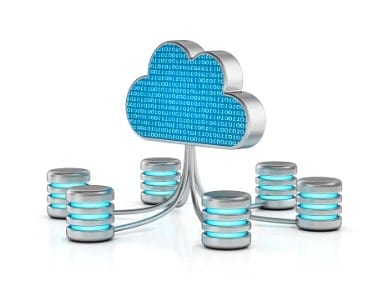A generation ago, when my eldest children were still young enough to be gathered up in my arms I entered a work position where my hiring manager quit his job literally a few weeks before I started.
To say that this situation was a little disconcerting would be to understate the level of concern that I had. At the same time though, I saw this as an opportunity to potentially step into the breech, so to speak, and fill the void left by the the former manager.
Such situations present themselves as both opportunities and threats but both are heavily dependent on the many circumstances that surround a job role and the work that needs to be done.
My skip-level manager, a C-suite exec, became my direct manager, though to call him a people manager is a courtesy that these days I might be more judicious about according him. In reality he was a frustrated politician, a people person to be sure, but deep down in his heart he was a process guy. He loved process!
What I didn’t appreciate at the time, is that he too, had an exit strategy in mind as he grew closer to retirement and became more threatened by young upstarts with comparable if not more impressive credentials despite being twenty plus years his junior.
His first tasks assignment to me was to establish a level of credibility within the business that would assure me implicit support from his peers at the C-suite or at the very least General Manager level.
This would be no mean feat given that the division in which I worked was largely regarded as a cost center and seen as relatively expensive when examined through a cross-charge accounting lens as a shared service.
Manufacturing was a large part of what our business did and as such carried the lion’s share of the shared service cost.
A second assignment was to determine a strategy for the business as a whole but more particularly for the manufacturing side of the business where it was felt things were a little maverick and unbridled.
No time horizons were defined but it stood to reason that as soon as I had established myself I should start the assessment of the status quo and start formulating plans.
To the experienced reader it should be now obvious that there are two elements here, the tactical and the strategic. The brief was to be strategic but in reality there is always tactical stuff to be done too.
My direct manager who had left had stuck around for around two years and then parted ways to go into Academia. His departure left no evidence of anything tactical or strategic so I was left to my own devices.
Setting a strategy
Setting a strategy is something I had done before but it had always been something undertaken with a clarity of the overall mission and vision. There was always a defined expectation around budget and some degree of commitment and certainty as to the timeline.
Things here were not so much green pastured and untilled as quite cloudy, ambiguous and quite unclear.
It has been said that engineering led organizations often don’t produce great products. Similarly, that product led organizations sometimes produce a great experience but with poorly thought out engineering design. Both are potentially true, there has to be a balance.
We had the same issue here, we had a manufacturing business with a strong reputation and excellent technical execution. But it wasn’t a very daring business, it didn’t push the boat out very far, and it took very few technical or ambition-based risks. Any roll of the dice tended to be really big and over-calculated. You could say bold, but really what it was, was that it was heavily de-risked. The chances of failure were minimized as much as possible.
Timing
Innovation was present, but it was innovation brokered on the backs of other pioneers and past success and scaled and refined within this context. What this meant is that strategic vision fell into very very long term planning and everything else was largely tactical. There were degrees of tactic though. A decision to replace broad swathes of expensive manufacturing equipment for example, was something that could be seemingly taken almost on a whim though that often concealed the fact that the decision might have been taken as many as two or three years earlier.
Similarly, a piece of equipment that was on its last legs and quite critical to the overall manufacturing operations was seemingly orphaned in terms of ownership and responsibility because it was supplier installed. Installed without much context or documentation. While it was critical in its nature, there wasn’t a lot of particular concern about it, inherenetly, because the vendor was held accountable for care and maintenance based on an expensive contract. Decisions needed to be made for the short term and for the long term depending on what the end-game was perceived to be for it.
All in all, what this conveys I suppose, is that it is easy to assume that all quick short term decisions are tactical, but that’s not entirely true. Some almost spur of the moment decisions can be taken today but have a long lasting significant impact that in effect is strategic in nature. So irrespective of time horizons you need to appropriately consider and classify.
Power plays
I already mentioned that the void left by the manager that departed meant that there was work to be done in ensuring that largest value contributing group – manufacturing – needed some reassurance that their tactical and strategic needs were being addressed.
This becomes particularly challenging when there is a credibility issue at stake. Unfortunately the relative independence of manufacturing operations up until the establishment of the shared services function meant that manufacturing felt that they had lost something with the excision of a number key resources from embedded to a central shared services model.
The task then, was to work on conveying reassurance that the same levels of service and support could be achieved for the business unit without compromise despite the changes in the service model.
When the politics and emotions of individuals is a dominant aspect of the business it is important to recognize that you may land up straddling an uncomfortable position where you are accountable to and many business leaders. For the most part this shouldn’t be too difficult to manage as long as the overall mission and intent of the collective is aligned and copacetic. Even if it isn’t you need to work out what matters in common between the disparate groups and develop thoughts and plans that harmonize the expectations and needs of divergent stakeholders.
I’d love to suggest that I did this well. I would say that I had moderate success.
Put another way, neither of the most senior decision makers either at the C-suite level or the GM for manufacturing turned me out on my ear or refused to entertain my suggestions or plans. To suggest that it was difficult to reach consensus would be to dismiss the divergent agendas of two strong personalities who were well tenured in the organization. Both wanted to leave a lasting legacy of decisions and choices that would stand the test of time long after they had left the organization but at the same time, both had different thoughts about what really mattered.
Small tactical decisions would therefore become tension points which larger more elaborate plans that could be considered more strategic in nature found a natural common ground and were easier to build consensus around.
My determination then, was that one needs to be mindful of the fact that sometimes decisions that are going to obviously be of lower impact and lower cost and therefore more likely tactical, may nonetheless become grounds on which unnecessary tug-o’-wars take place. One just needs to recognize this and work through it as best one can. Influence where you can and be aware of the power dynamics between those that matter.
What matters
My last thoughts in this piece are around sensitivity to what ultimately matters. You could think of this in the context of prioritization but it is a lot more than that, particularly if your function and the tactical and strategic plans are not considered particularly focal to the business.
My observation, in a number of industries is that several functions are not considered terribly important until they fail or become a problem. Amongst these are accounting, IT, quality assurance, personnel management. These supporting functions may be important but if they are not what defines the business or organization then they are only ever going to be supporting.
This means that investment, which is often strategic in nature, will not happen unless you can articulate or demonstrate how these will fundamentally impact the effectiveness of the organization.
I think we see this time and time again. For a municipality or local government environment for example, one recognizes that the budgeting process, collections, payables and capital management and all things financial are important but when politics is the foremost concern of the day, you have to work out how failure in any one of these lesser areas will negatively impact the political aspects.
Similarly if the business is a logistics business, with big capital spend on vehicles, rolling stock and equipment, the foremost topic is unlikely to be inventory management, communications or control systems.
Depending on your industry and your role, your influence, and the timing you have to find the traits of these lesser components impact on the effective management of what matters for the business. When you have worked out all three, you may have the perfect environment for determining how much you can strategically vs tactically.
A nod to : Jo Miller and her 2018 post on Forbes for some inspiration for this piece.

























 Decide if the data warehouse should be on-premise, cloud or hybrid. This includes understanding the budget available for the overall initial program/project and its impact on the decision.
Decide if the data warehouse should be on-premise, cloud or hybrid. This includes understanding the budget available for the overall initial program/project and its impact on the decision. Best practices in business intelligence and data warehousing go hand in hand. The better the data warehouse technical infrastructure, the better the organization can collect, store, analyze, and present the data for consumer intelligence. Organizations have to be careful of insufficient data quality resulting in bad data for business intelligence. The data warehouse should easily support tools or applications that need the data for business intelligence. Reporting, data mining, process analysis, performance benchmarking, and analytical tools support business intelligence and should be quickly implemented without creating homegrown solutions for the data warehouse.
Best practices in business intelligence and data warehousing go hand in hand. The better the data warehouse technical infrastructure, the better the organization can collect, store, analyze, and present the data for consumer intelligence. Organizations have to be careful of insufficient data quality resulting in bad data for business intelligence. The data warehouse should easily support tools or applications that need the data for business intelligence. Reporting, data mining, process analysis, performance benchmarking, and analytical tools support business intelligence and should be quickly implemented without creating homegrown solutions for the data warehouse.







